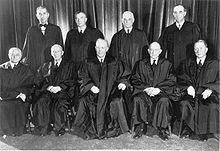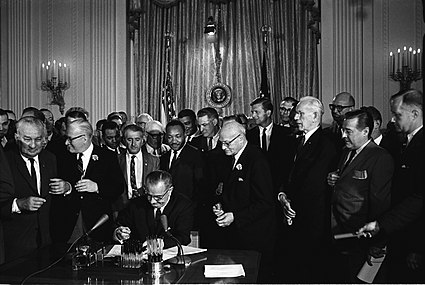Jessica Q.
Law 💼
8 resourcesSee Units
Racial Segregation in Public Schools Violated the Fourteenth Amendment
Welcome to a guide to Brown v. Board of Education, a landmark court case that set a precedent for the Supreme Court 💼 and United States history 🌎 itself. In this 1954 case, the Supreme Court judges ruled unanimously that racial segregation in schools 🏫 is unconstitutional. Let’s jump into examining 🔎 this case further, from events preceding it to the actual ruling, and how it continues to affect the United States today.

Image Courtesy of Wikipedia
How the Case Came to Be
Another landmark case was the 1896 Plessy v. Ferguson ruling. SCOTUS ruled that racial segregation in public facilities was allowed ✅, as long as they were “equal.” This laid down the “separate but equal” doctrine ⚖️ that governed society for the next few decades. Jim Crow laws were developed, which prevented 🙅♀️ African-Americans from sharing facilities with whites. However, there were many “loopholes” to what “equal” meant, and rarely were the facilities ever actually equal.
Nonetheless, several prominent figures continued to challenge these laws. In 1951, Oliver Brown filed suit 📋 against the Board of Education of Topeka, Kansas. Linda Brown, his daughter, had been denied an education at all-white elementary schools. Brown believed that African-American schools were not equal ❌ to their white counterparts, and that the segregation between the two races violated the Equal Protection Clause of the 14th Amendment (mandates that individuals in similar situations must be treated equally by the law). 📜
With the past precedent set by Plessy v. Ferguson decades 🕐 before, federal district courts continued to uphold that verdict. However, Brown’s case, as well as four other similar cases, were combined under Brown v. Board of Education of Topeka as it went 🚗 to the Supreme Court.
How the Case Unfolded
Chief Justice Earl Warren led 🚀 the case, while Thurgood Marshall, who would later be appointed the first black justice of the Supreme Court, was chief attorney 🔨 for the plaintiffs (who included Brown, as well as the other African-American families).
The judges came to a unanimous decision in 1954. They decided that racial segregation in public schools DID, in fact, violate 💡 the Equal Protection Clause. The Court believed that the clause guaranteed equal education 📚. According to Thirteen.org, the Supreme Court claimed that “public education in the 20th century...had become an essential component of a citizen's public life, forming the basis of democratic citizenship, normal socialization, and professional training.” Therefore, it must be offered 🤲 equally to both whites and blacks.
How the Case Affects Society Today
Brown v. Board of Education is considered one of the greatest 💪 landmark cases of the 20th century and added fuel to the flame 🔥 of the civil rights movement. It was a huge step 👠 forward towards racial equality.
The Court did not speak about how schools should be racially integrated 🤷, and the verdict did not completely desegregate public schools in the United States. Some states did follow ✊ the decision and began integrating their schools, but many, especially in the South, openly defied it. 😡 An example of this was Little Rock Nine: In 1957, the governor of Arkansas used the state’s National Guard to prevent Black students from attending a white high school.
In 1955, the Supreme Court argued 📢 Brown v. Board II. In this case, they aimed to analyze 🤔 what actions should be taken in order to implement the verdict of the first case. They decided that the decision should be implemented “with all deliberate speed,” and demanded that local school authorities should follow the verdict with full compliance. 🤝
Despite its setbacks, Brown v. Board ultimately had a significant impact on the civil rights movement. 🙌 It contributed to events like the Montgomery Bus Boycott 🚍 and demonstrations led by Martin Luther King, Jr. Most importantly, it overturned the “separate but equal” precedent set by Plessy v. Ferguson. Eventually, the Civil Rights Act of 1964 ❤️ was passed, prohibiting discrimination based on race, color, religion, sex, or national origin.

Image Courtesy of Wikipedia
Though this case sent waves of impact through the United States, decades later, our country is still arguing 👣 over the best way to solve racial inequalities in school systems. Large factors in these inequalities include living areas and wealth. 💸
Note: Thirteen.org was used as a source for this guide.
Connect with other students studying Brown v. Board of Education with Hours. 🤝
Browse Study Guides By Unit

Fiveable
Resources
© 2025 Fiveable Inc. All rights reserved.